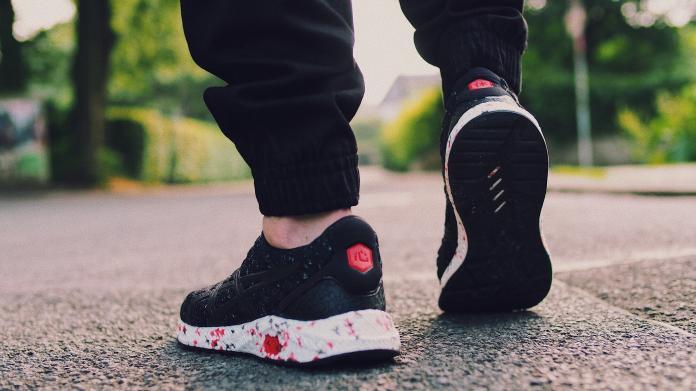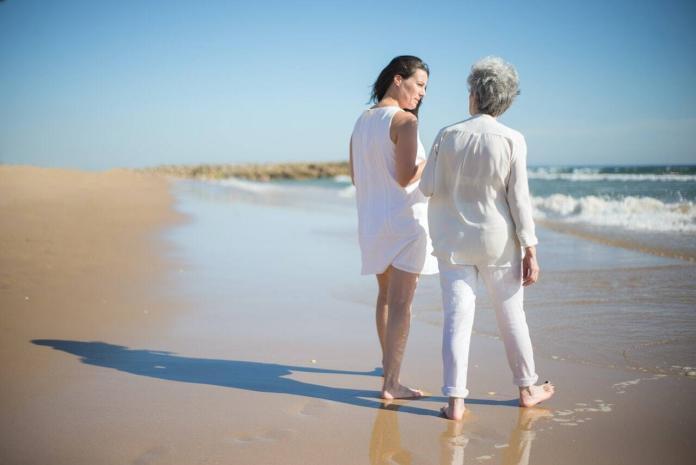If you’re a runner, it’s important to get the right pair of running shoes. A good pair of running shoes will help you run faster and farther with less risk of injury. But how do you know which ones will work best for your body type and style of training? And what if you’re wearing the wrong size or style? In this post, we’ll discuss everything from choosing your shoe size to finding the right fit for cross-training activities (like walking or cycling).
How Do I Choose Running Shoes?
Choosing the right running shoe is a personal decision, but there are some guidelines you should follow.
- Choose shoes based on your goals and needs. If you’re aiming to run faster or farther, or if your feet are particularly susceptible to injury, then it makes sense to invest in a more expensive model that will last longer and provide better protection against injury. However, if you’re just getting started and want something easier than what’s available in department stores or online retailers (which can be expensive), then consider buying used running shoes instead! You’ll save money while still getting what works best for your body type and needs—and at this point, it doesn’t matter whether those products were purchased new or secondhand anyway!
- Take into account how much time each person spends training versus competing with others; more likely scenarios include: – Running faster than 5 miles per hour – Playing soccer/football games outdoors during summer months – Playing basketball indoors during winter months – Working out regularly without any particular goal in mind.
Choosing Running Shoes for Trail Running
Trail running shoes are specifically designed for off-road running, so they’re good for uneven terrain and muddy surfaces. They have more grip, a lower heel and more cushioning than road shoes. They’re also lighter than other types of running shoes—trail runners can cut up their existing pairs of road or cross-training shoes to make them compatible with the trails (or vice versa).
Choosing Running Shoes for Cross Training
If you’re looking to get into cross training, it’s important that your shoes are lightweight and flexible. For example, if you’re doing yoga or Pilates, a shoe will be more comfortable than one that has a hard sole. Also, if your workout includes weightlifting or running on soft surfaces (like grass or sand), then choose a shoe with good traction on the sole so as not to slip around too much in those conditions.
Choosing Running Shoes for Walking/Comfort Shoes
As you’re shopping for running shoes, there are a few things to keep in mind. The most important thing is comfort—you don’t want to spend all your time on your feet in a pair of uncomfortable shoes! But it’s also important not to go too cheap. You’ll be spending hundreds of dollars on these shoes over the course of their lifetime, so don’t skimp out on quality materials and craftsmanship just because they’re cheaper than other brands.
Some general tips: look for wide toe boxes and soft soles (not one or two layers). If possible, try them on at a store before buying online if possible! Your feet need room to move naturally while also providing support where needed; this will help prevent soreness later down the road when wearing those same pairings consistently throughout long runs/races day after day without rest breaks between each training session (which can lead up towards injury).
Choosing Your Running Shoe Size
To ensure that the running shoes you choose are right for your feet, it’s important to measure them. First, stand barefoot and place one foot on a ruler or yardstick at its widest point. Mark this spot with a pin or stick; then repeat with the other foot.
Next, compare these measurements to those of running shoes available in stores:
The length from heel to toe should be equal or shorter than half of your height (in inches). If not, try another size until it does! You can wear socks over your toes if they don’t fit inside their boxy shape well enough when trying on shoes first thing in the morning after sleeping overnight without changing into anything but bedclothes from yesterday evening; however many people find wearing socks uncomfortable because they have extra material around them which could get caught up under their heels—this is especially true if you have Plantar Fasciitis syndrome–so keep this option open until later on down this list too since there might be some benefits associated with wearing them over bare skin beneath sneakers only during training days/evenings etc., where heat may come into play causing sweating due later stages after workouts so having some additional protection built-into shoe design could help prevent blisters forming while walking around outside all day long.
Getting the right running shoes is important for a successful run
When you run, your feet are the only part of your body that touches the ground. That’s why it’s so important to get the right pair of running shoes—you can make or break your run depending on what kind of cushioning, support and stability they provide.
The most important thing about getting running shoes is knowing how to choose them based on their purpose: whether they’ll be used for distance or speed workouts; whether they’ll be worn indoors or outdoors; whether they should be used for light jogging or heavy sprinting (such as football). You’ll also want to consider things like arch support, toe box width and heel lift/drop height while shopping around at various stores until finding one that suits both your needs AND budget!
Conclusion
Choosing the right running shoes is a science, and it takes time to learn your body’s quirks. If you’re not sure what to do, don’t worry! Just go with your gut and try on lots of different styles until you find something that feels good. Once you do, stick with those shoes—they’ll be there when you need them.
You may want to read more,








